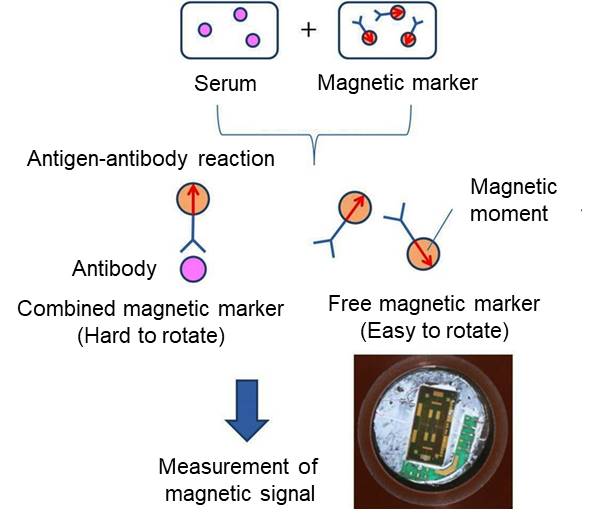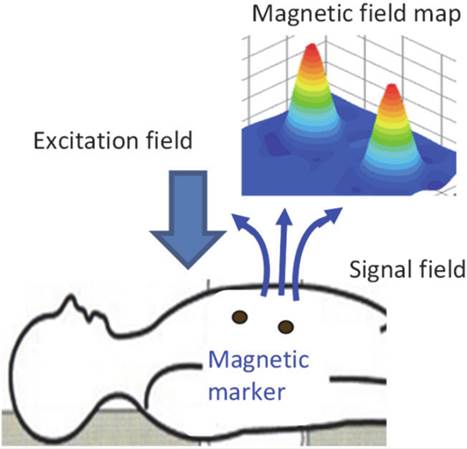超電導センサテクノロジー株式会社 SUSTEC(Superconducting Sensor Technology Corporation; SUSTEC)

Home > Technology > Bio & medical applications
Magnetic immunoassay
Immunoassay that check for the presence and amount of antibodies, which are proteins derived from diseases that are produced in the blood due to infection or allergies, are widely used for diagnosing diseases. An immunoassay uses a marker modified with a protein that binds only to a specific antibody as a reagent, and the antibody is detected by measuring the signal from the marker. Currently, optical markers such as phosphors are used, but as an alternative method, magnetic immunoassay using magnetic markers using magnetic fine particles is attracting attention.
Magnetic immunoassays use the difference in brown rotational motion to distinguish between bound and unbound markers. This eliminates the need for the process of cleaning and removing excess markers, enabling rapid inspection. In addition, since it is possible to test samples that do not transmit light, it is expected to be used for whole blood tests and internal diagnosis. By using the highly sensitive SQUID for the magnetic sensor, it is possible to detect trace amounts of antibodies at the atom level (atmol = 10-18 mol). By using the highly sensitive SQUID for the magnetic sensor, it is possible to detect trace amounts of antibodies at the atom level (atmol = 10-18 mol).
References:
Keiji Enpuku et al , “Biosensing utilizing magnetic markers and superconducting quantum interference devices”, 2017 Supercond. Sci. Technol. 30 053002.

Magnetic particle imaging
New imaging technology (magnetic particle imaging, MPI) that accumulates magnetic markers in diseased areas of the body and detects and visualizes their position and amount from the body surface is expected to be developed as a new in-vivo diagnostic technology. SUSTERA (Currently SUSTEC) has participated in the research and development of JST's Strategic Innovation Creation Promotion Program and has cooperated in the development of high-precision magnetic imaging methods using HTS-SQUID.
Reference:
Keiji Enpuku et al , “Biosensing utilizing magnetic markers and superconducting quantum interference devices”, 2017 Supercond. Sci. Technol. 30 053002.
